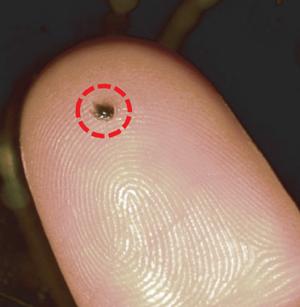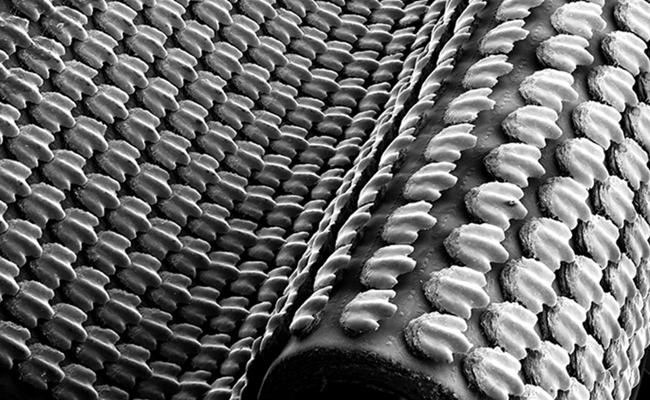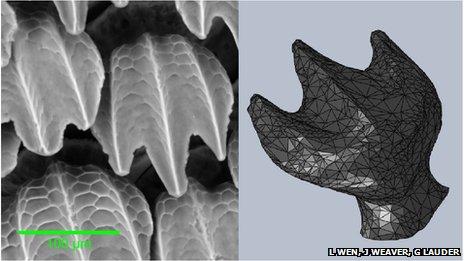When it comes to innovation, some of the most technologically advanced objects still belong to nature. Over the centuries, many inventions have come about, by observing nature in its finest moments.
At the same time, other inventions have failed miserably because their inventors tried to mimic nature, in cases where it was not possible to do. Take for example, the countless number of times in the past, that people have tried to invent flying machines (airplanes) by mimicking the flapping motion of a bird’s wings. It simply did not work, because of general physics.
Scientists from Harvard University have scanned sections of shark skin, including their ultra fine denticles. They then printed out material that replicates its properties. A shark’s skin is very unique, in that it includes tiny little teeth-like scales (denticles) that help them propel themselves through the water, at relatively high speeds.
The researchers at Harvard University used highly sophisticated, precision based 3D printers to mimic the properties of shark skin, to the best of their ability. Even with today’s technology, the best that the team could do, was to print out imitation skin which included denticles that were ten times larger than real life shark denticles. However, the skin, featuring denticles 10 times larger than that of a real shark, showed tremendous results when put to the test. The researchers put the 3D printed skin onto flexible paddles, and found that they added an incredible 6.6% boost in swimming speed.
Now imagine, say 5 years down the road, scientists can print this skin-like material in proportions that equal that of real shark skin. Then imagine what this could mean for the technology of boat motors and propellers. If a boat’s propeller could be covered in this skin-like material, imagine how much more efficient it could be. Fuel efficiency for watercraft, such as boats, yachts, and ships is extraordinarily high when compared to that of automobiles. This could solve one of the major issues in water transportation today.
“Eventually this technology could be used to improve the efficiency of surfaces moving through water,” explained George Lauder, a member of the Harvard research team. “But a truly biomimetic shark skin swimming suit is unlikely to be on the cards for some time. ‘The manufacturing challenges are tremendous.”
With this said, there is no telling for sure how much more efficient the imitation shark skin would be, if scientists one day could get the proportions correct. A good hypothesis, however, would conclude that we could see much improved results over the 6.6% increase in speed that we saw with their current technology.
Discuss this new 3D printed imitation shark skin, and the influence that it could have on technology, in the shark skin discussion thread.
Subscribe to Our Email Newsletter
Stay up-to-date on all the latest news from the 3D printing industry and receive information and offers from third party vendors.
You May Also Like
Precision at the Microscale: UK Researchers Advance Medical Devices with BMF’s 3D Printing Tech
University of Nottingham researchers are using Boston Micro Fabrication‘s (BMF) 3D printing technology to develop medical devices that improve compatibility with human tissue. Funded by a UK grant, this project...
3D Printing Webinar and Event Roundup: April 21, 2024
It’s another busy week of webinars and events, starting with Hannover Messe in Germany and continuing with Metalcasting Congress, Chinaplas, TechBlick’s Innovation Festival, and more. Stratasys continues its advanced training...
3D Printing Webinar and Event Roundup: March 17, 2024
It’s another busy week of webinars and events, including SALMED 2024 and AM Forum in Berlin. Stratasys continues its in-person training and is offering two webinars, ASTM is holding a...
3D Printed Micro Antenna is 15% Smaller and 6X Lighter
Horizon Microtechnologies has achieved success in creating a high-frequency D-Band horn antenna through micro 3D printing. However, this achievement did not rely solely on 3D printing; it involved a combination...
































